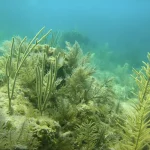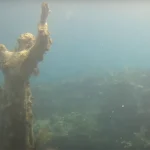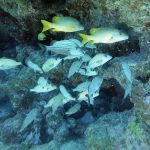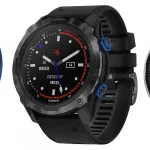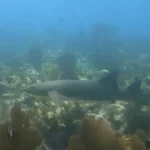Table of Contents
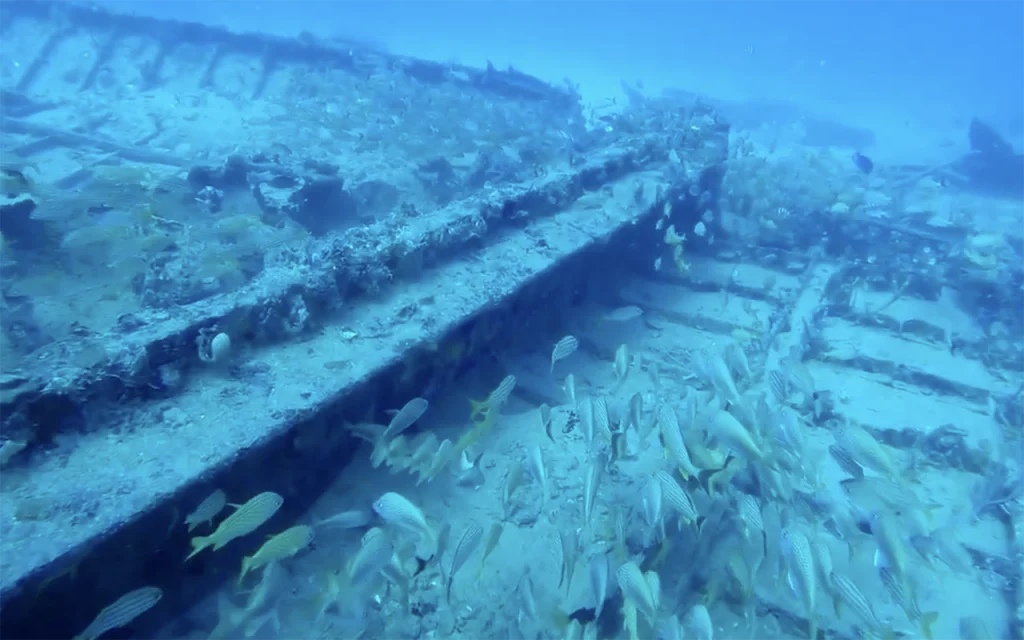
The Sucre is described as an exciting deep wreck dive that attracts technical divers looking for a challenging and rewarding underwater experience in the “Wreck Diving Capital of the World” off Pompano Beach, Florida.
Article at a Glance
- Historical Background: The Sucre, originally named Louise, was launched in 1957 in Germany and had a varied career, including being seized by the U.S. Coast Guard in 1994 due to drug trafficking.
- Wreck Details: The shipwreck is located off Pompano Beach, Florida, and rests upright in approximately 215-225 feet of water, with the main deck at about 190 feet.
- Artificial Reef: Intentionally sunk on April 27, 1996, the Sucre serves as an artificial reef, providing habitat for marine life and a diving destination for enthusiasts.
- Exploration Opportunities: Divers can explore notable features such as cargo cranes, large vacant holds, the aft superstructure, and the engine room, making it an intriguing site for underwater exploration.
- Marine Life: The wreck attracts a variety of marine species, including large Amber Jacks and other big fish, enhancing the diving experience.
- Diving Requirements: Due to its depth, the Sucre is designated for technical divers only, requiring appropriate certifications and experience to ensure safety during dives.
- Safety Protocols: Divers are advised to follow strict safety measures, including gas management, dive planning, and buddy systems, while diving at this challenging site.
Shipwreck Location Coordinates and Depth
Depth
- The wreck sits upright on the continental slope.
- Its bow points south.
- The ship rests in approximately 215 to 225 feet of water2.
- The main deck is encountered at about 190 feet2.
Location Coordinates
26° 14.383′ N, 80° 03.411′ W
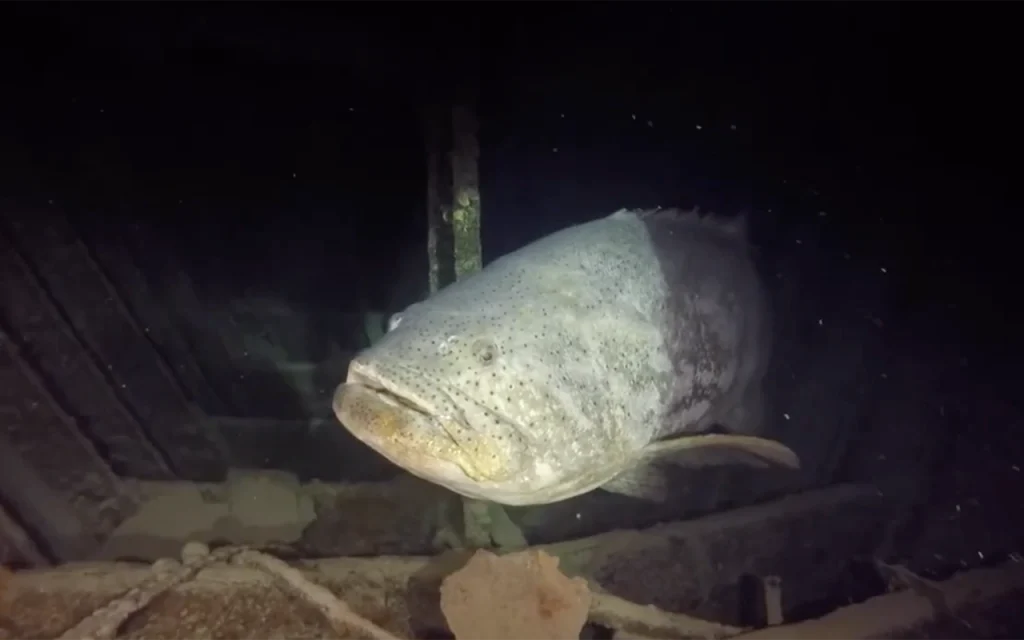
What Do Scuba Divers Say About This Ship
Diving Experience
Divers report that the Sucre offers an exciting and challenging dive experience:
- It’s considered a technical dive due to its depth, suitable for experienced deep divers2.
- The wreck sits upright and intact, providing interesting exploration opportunities2.
- As divers descend, they may encounter large Amber Jacks around the wreck.
Notable Features
Divers highlight several interesting aspects of the Sucre:
- Two large vacant holds in the forward portion of the ship2.
- Cargo cranes on deck, offering good photo opportunities2.
- An aft superstructure and engine room for exploration2.
- Collapsed forward bridge bulkheads, creating a unique vacant area2.
Dive Conditions
- The main deck is encountered at about 190 feet2.
- The wreck rests in approximately 215 to 225 feet of water2.
- It’s considered a good spot to see big fish.
Historical Interest
Divers appreciate the wreck’s history:
- Built in Germany in 1957, it had a long career under different names before being sunk as an artificial reef2.
- It was seized by the U.S. Coast Guard in 1994 after finding 300 pounds of cocaine onboard, adding an intriguing backstory to the dive2.
What Kind of Marine Life Can Be Found on The Ship
Fish Species
- Large Amber Jacks are commonly seen around the wreck as divers descend.
- It’s considered a good spot to see big fish in general.
Coral Growth
While specific details about coral growth on the Sucre are not provided in the search results, artificial reefs like this one typically become habitats for coral over time:
- Shipwrecks provide a solid surface for coral to take hold and grow2.
- As time passes, corals are expected to transform the ship’s structure.
General Marine Life
The wreck serves as an artificial reef, attracting various forms of marine life:
- It provides habitat and protection for numerous species of marine animals2.
- The structure offers hiding places for fish, protecting them from predators2.
Developing Ecosystem
As with other artificial reefs in the area:
- The wreck is likely home to a variety of marine life, which will increase in diversity over time.
- The ecosystem around the wreck is expected to develop further as more organisms colonize the structure.
Key Information
| Category | Details |
|---|---|
| Name | Sucre |
| Original Name | Louise |
| Construction | Launched: April 2, 1957; Built in Bremerhaven, Germany |
| Dimensions | Length: 237 feet |
| Depth | Approximately 215-225 feet; Main deck at 190 feet |
| Location | Off the coast of Pompano Beach, Florida |
| Sinking Date | April 27, 1996 |
| Historical Significance | Seized by U.S. Coast Guard in 1994 after cocaine discovery; transformed into an artificial reef |
| Current Condition | Upright and intact, with various features available for exploration |
| Notable Features | – Cargo cranes on deck – Two large vacant holds – Aft superstructure – Engine room – Collapsed forward bridge bulkheads |
| Marine Life | Large Amber Jacks and other big fish |
| Diving Requirements | Technical diving certification required; experienced divers only |
| Safety Measures | – Gas management – Dive planning – Surface support – Buddy system – Pre-dive briefings |
| Recommended Dive Shops | – South Florida Diving Headquarters – Local Pompano Beach dive operators – Technical diving specialists |
What Makes The Sucre Shipwreck a Unique Diving Experience
Technical Diving Challenge
- The wreck sits at a depth of approximately 215-225 feet, with the main deck at 190 feet4.
- This depth makes it suitable only for experienced technical divers, requiring specialized training and equipment.
Intact Structure
- The Sucre rests upright and intact on the continental slope4.
- This preservation allows divers to explore a complete ship structure, providing a more immersive experience.
Exploration Opportunities
- The wreck offers various areas for exploration:
- Two large vacant holds in the forward portion
- Cargo cranes on deck, providing interesting photo opportunities
- Aft superstructure and engine room for internal exploration
- Collapsed forward bridge bulkheads creating a unique vacant area4
Marine Life
- Large Amber Jacks are often seen around the wreck as divers descend.
- It’s considered a good spot to observe big fish.
Historical Interest
- Built in Germany in 1957, the ship had a long career under different names4.
- It was seized by the U.S. Coast Guard in 1994 after discovering 300 pounds of cocaine onboard, adding an intriguing backstory4.
Part of a Larger Diving Destination
- The Sucre is part of the “Wreck Diving Capital of the World” off Pompano Beach, Florida.
- It contributes to a diverse collection of wrecks in the area, offering varied diving experiences.
How Does The Sucre Compare to Other Shipwrecks in Florida
Depth and Technical Challenge
- The Sucre rests at 215-225 feet, with the main deck at 190 feet2.
- This makes it a technical dive, suitable only for experienced deep divers.
- Many other Florida wrecks, like the SS Copenhagen or the San Pedro, are in shallower waters (18-25 feet) and accessible to novice divers.
Size and Structure
- At 237 feet long, the Sucre is a substantial wreck.
- It sits upright and intact, offering a complete ship structure for exploration2.
- While not the largest in Florida, it’s bigger than some popular wrecks like the 175-foot Captain Dan or the 130-foot Corey N Chris.
Historical Interest
- The Sucre has an intriguing history, including being seized by the U.S. Coast Guard in 1994 after cocaine was found onboard2.
- This adds a unique backstory compared to other wrecks like the SS Copenhagen, which has been underwater for over 100 years.
Marine Life
- The Sucre is known for attracting large Amber Jacks and other big fish.
- While many Florida wrecks become artificial reefs, the Sucre’s depth may affect the type and amount of marine life compared to shallower wrecks.
Accessibility
- Located off Pompano Beach, the Sucre is part of the “Wreck Diving Capital of the World”.
- It’s more accessible than some remote wrecks, but its depth limits the number of divers who can explore it.
What is The Full History of This Ship
Construction and Early Years
- Launched: April 2, 1957
- Built as a freighter at the Bremerhaven, Germany shipyard Schiflbaugesellschafl Unterweser A.G.
- Original name: Louise
Name Changes and Ownership
The ship had several name changes throughout its career:
- Louise (1957-1980)
- Chiloe III (1980-1988)
- Kenco I (1988-1991)
- Sucre (1991-1996)
It was sold multiple times:
- Sold in 1980 and again in 1988
- In 1991, sold to Honduran owners
Final Years and Seizure
- 1994: Seized by the U.S. Coast Guard after discovering 300 pounds of cocaine onboard
- This event marked the end of its active service career
Sinking as an Artificial Reef
- Date: April 27, 1996
- Location: Off the coast of Pompano Beach, Florida
- Purpose: Intentionally sunk to create an artificial reef
- Sponsored by: Pompano Fishing Rodeo
As a Dive Site
- Also known as: Johnny Morris
- Length: 237 feet
- Rests upright and intact on the continental slope
- Depth: Approximately 215-225 feet of water, with the main deck at 190 feet
- Orientation: Bow points southward
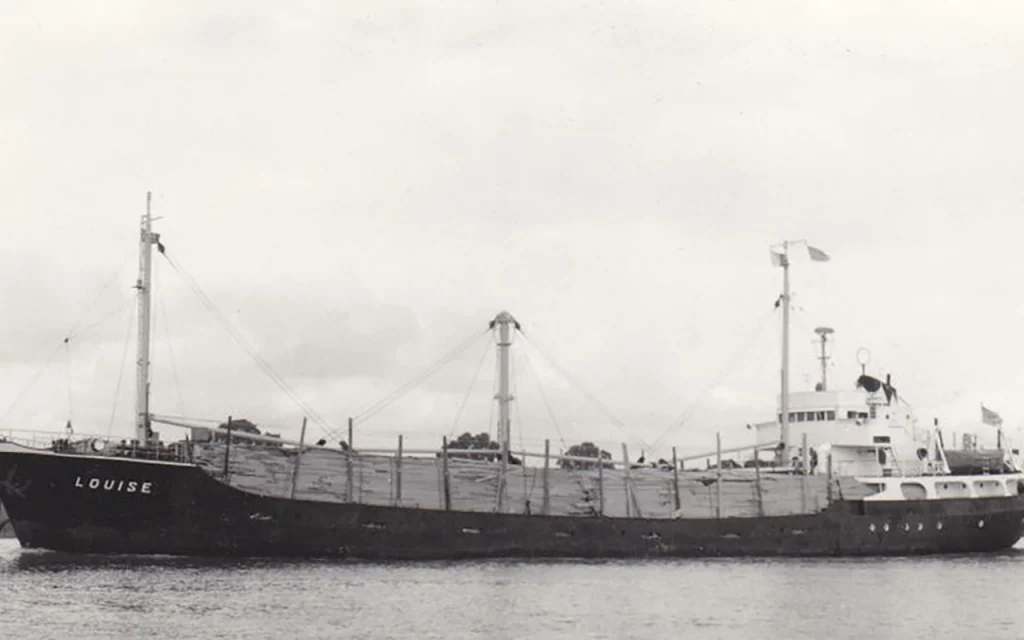
What Historical Features Can Still Be Identified on The Sucre Wreck
- Intact Structure: The Sucre rests upright and intact on the continental slope, allowing divers to explore a complete ship structure.
- Cargo Cranes: The wreck still has its cargo cranes on deck, which offer interesting photo opportunities for divers.
- Large Vacant Holds: The forward portion of the vessel consists of two large vacant holds, preserving the ship’s original cargo storage areas.
- Aft Superstructure: The aft superstructure remains intact, allowing for exploration of this part of the ship.
- Engine Room: The engine room is still accessible, providing insight into the ship’s propulsion systems and technology of its time.
- Bridge Area: While the forward bridge bulkheads have collapsed, the intact bridge wings on each side create a unique vacant area for exploration.
- Main Deck: Encountered at about 190 feet, the main deck provides a reference point for the ship’s overall structure.
- Bow: The bow of the ship points southward, maintaining its original orientation.
What Safety Measures Are in Place for Divers Visiting the Sucre Wreck
- Technical Diving Requirements: Given the Sucre’s depth (215-225 feet), only experienced technical divers with appropriate certification and training would be allowed to dive this wreck.
- Gas Management: Divers would need to carry sufficient gas supplies, including:
- Primary tanks with appropriate gas mixtures for the depth
- Backup air supply (e.g. pony bottles or double tanks)
- Extra-long regulator hoses for air-sharing in confined spaces
- Dive Planning: Detailed dive plans would be required, including:
- Calculated gas consumption rates
- Planned bottom time
- Decompression schedules
- Emergency procedures
- Navigation Equipment: Divers would need to carry:
- Strong primary lights
- Backup lights
- Large primary wreck reels for laying guidelines
- Protective Gear: Given the wreck’s structure and potential hazards, divers would likely wear:
- Full body exposure suits
- Gloves to protect against sharp edges
- Surface Support: A properly equipped dive boat with experienced crew would be essential, including:
- Oxygen and first aid equipment
- Communication devices
- Ability to assist divers in rough sea conditions
- Buddy System: Divers would be required to dive in buddy teams and maintain close contact.
- Limited Penetration: Given the technical nature of the dive, penetration into the wreck may be limited or restricted to specially trained divers.
- Pre-dive Briefings: Thorough briefings on the wreck’s layout, potential hazards, and emergency procedures would be conducted.
- Weather and Sea Condition Assessments: Dives would only be conducted when conditions are deemed safe by experienced dive operators.
Dive Shops That Provide Diving Trips to This Shipwreck
- South Florida Diving Headquarters: This dive operator mentions the Sucre in their list of dive sites, suggesting they may offer trips to this wreck.
- Local Pompano Beach dive operators: Since the Sucre is located off the coast of Pompano Beach, Florida, local dive shops in this area are likely to offer trips to this wreck.
- Technical diving specialists: Given that the Sucre is a deep wreck (215-225 feet), only dive shops that cater to technical divers would offer trips to this site.
To find specific dive shops that offer trips to the Sucre, you would need to:
- Contact dive operators in the Pompano Beach area.
- Look for technical diving specialists in South Florida.
- Inquire with local dive clubs or forums about operators who run trips to deep wrecks like the Sucre.
Central Florida Wrecks
- SS Breconshire
- Georges Valentine
- Hog Heaven
- Urca De Lima
- USS Rankin
- Ana Cecilia
- United Caribbean
- USS Mindanao
- The Laertes
- Berry Patch Tug Wreck
- The Liberty Ship
- The Ana Cecilia
- The Cities Service Empire
- USS Accokeek
- The Tortuga Wreck
- Princess Ann Wreck (Palm Beach)
- Okinawa Wreck (Pompano Beach)
- MG-111 Wreck (Jupiter)
- Lady Luck Wreck (Pompano Beach)
- Rodeo 25 Wreck (Pompano Beach)
- Lowrance Wreck (Pompano Beach)
- RSB-1 Wreck (Deerfield Beach)
- Rebel Wreck (Deerfield Beach)
- Noulla Express Wreck (Fort Lauderdale)
- Sucre Wreck (Fort Lauderdale)
- Captain Tony Wreck (Pompano Beach)
- Peter McAllister Wreck (Pompano Beach)
- Guy Harvey Wreck (Fort Lauderdale)
- Quallman Tugs Wreck (Pompano Beach)
- Miller Lite Wreck (Pompano Beach)

